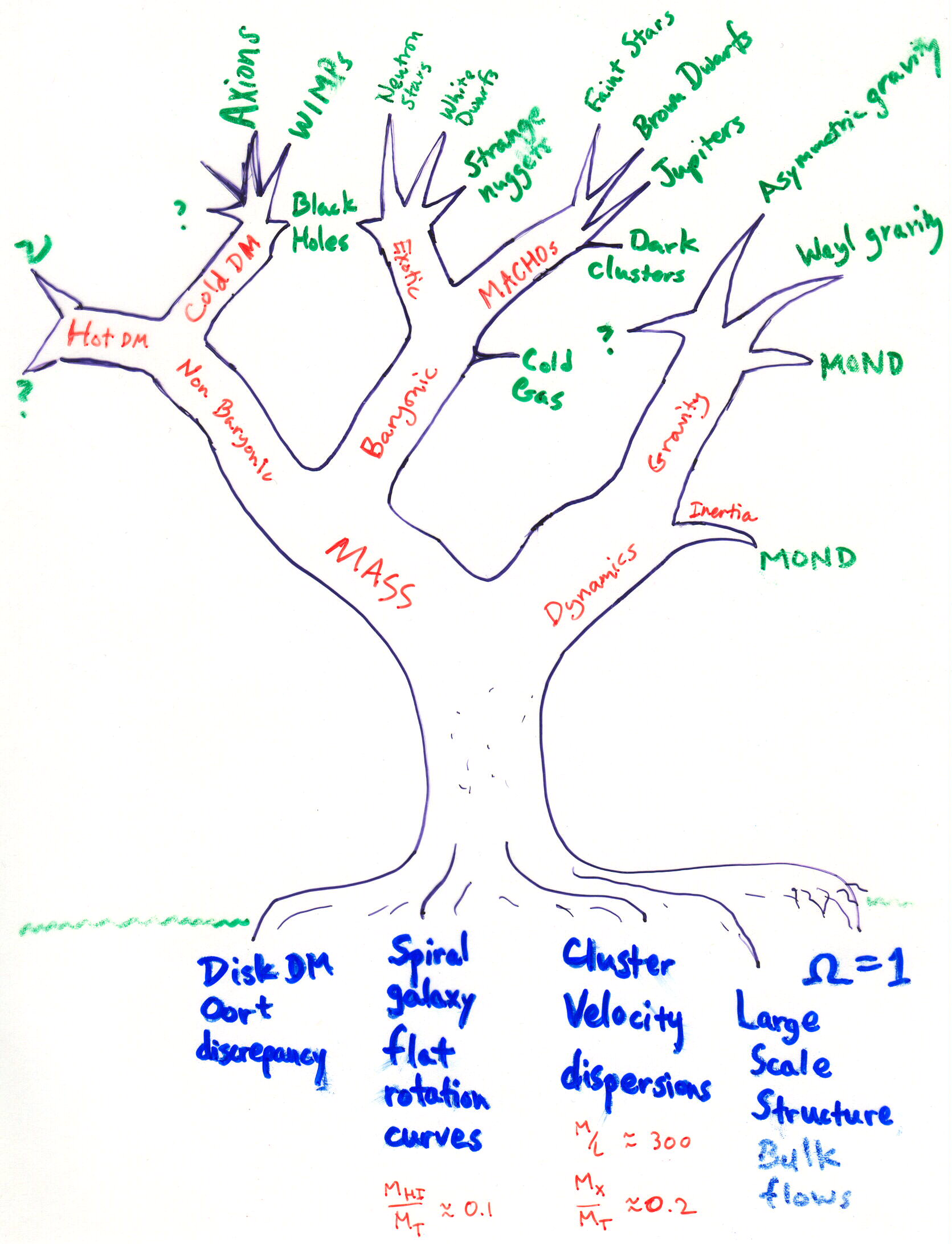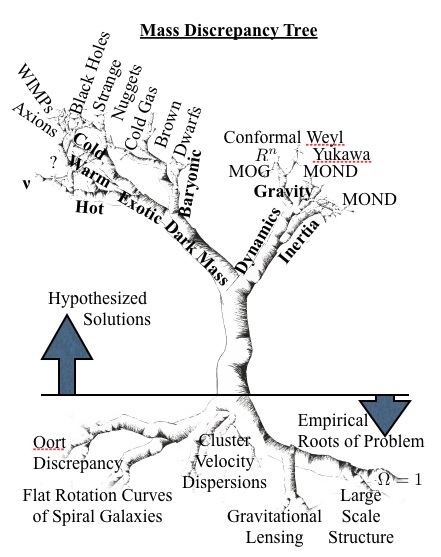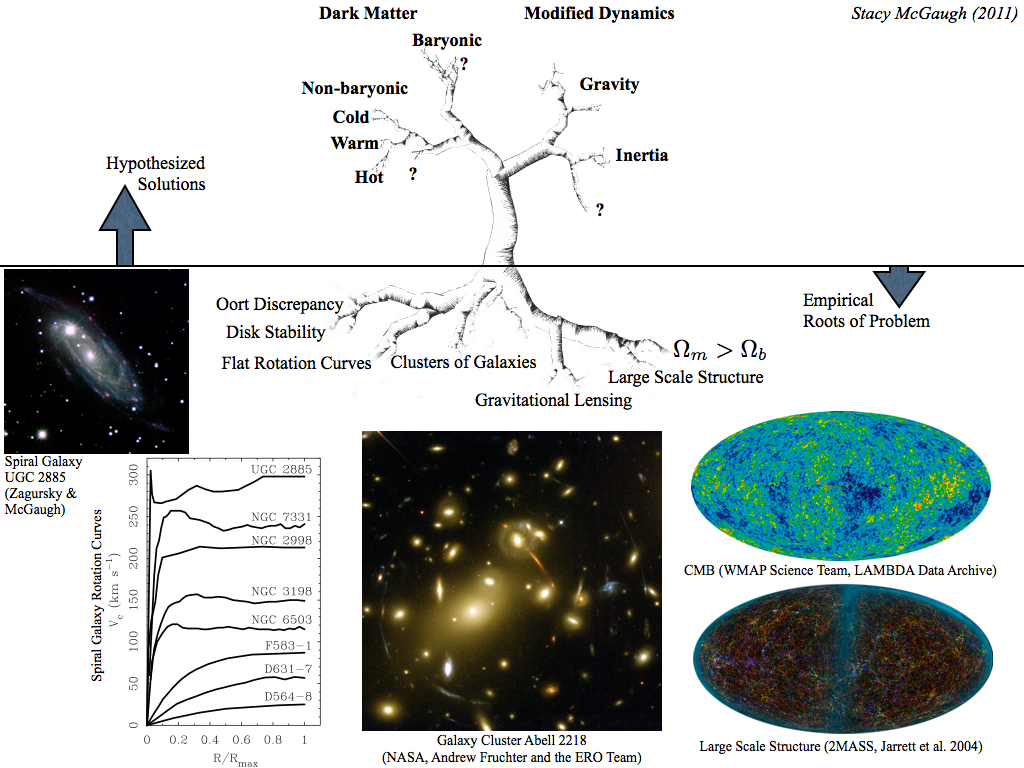

© 1995, 2013 Stacy McGaugh. Feel free to reproduce, of course providing
proper credit and linking this web page if possible.
The empirical observations that the motivate dark matter problem are the roots of the tree; the various hypothesized solutions are its fruit.

|

|
| Original version, circa 1995 (scanned from hand drawn transparency). | Version for the cover of the March 2013 issue of Physics Teacher. |
| Starry background version partial © 2013 Don Lincoln & AAPT. |
For proper epistomology I suppose we should call this the mass discrepancy tree since it does include a branch for modified dynamics, but I always thought of it as the Dark Matter Tree. Just sounds better. Which I suppose is at the root of many of our epistomological problems.
I am pleased at how well this holds up over time. The only omission I'd explicitly add now is a specific branch for Warm Dark Matter. That is what I had in mind with the speculative "?" in between the hot and cold branches, though that can also stand for self-interacting dark matter or anything we might make up in the wake of the implosion of the WIMP paradigm. Those ideas do not have such clearly named candidate particles (as of 3/13), so perhaps a ? remains the best entry.
These seem to me not to capture the essence of the issues as well as the original hand-drawn version.

|

|
| An early (circa 2000) attempt at a digital version. | Fig. 1 of Famaey & McGaugh (2012). |
I notice that only in the latest version do I replace the long-standing theoretical pipe-dream of reaching Ω = 1 with dark matter (finally abandoned in the '90s) with the empirically more appropriate Ωm > Ωb (the former being the mass density of the universe and the latter the baryon density from big bang nucleosynthesis). This always seemed to me to be the best argument for non-baryonic dark matter, thus admitting consideration of particles outside the standard model of particle physics. This argument goes away in successful theories of modified dynamics, where Ωm is overestimated in the usual way.
